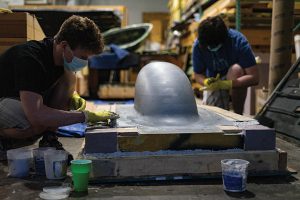Illini Solar Car
Illini Solar Car is a team of multidisciplinary students who designs and builds solar cars to race in cross-country solar races like the World Solar Challenge and the American Solar Challenge. The cross-country races allow students to apply their technical knowledge to build a road-worthy car, and provide opportunities for them to learn soft skills in managing race logistics and raising funds.
Last fall, Illini Solar Car was hard at work on our new vehicle, “Brizo,” the second car to be built by our team since its creation in 2014. Compared to “Argo,” the first car, it is longer and narrower, shaped like a bullet to be more aerodynamic. We were busy designing and testing printed circuit boards for our electrical system, writing firmware to get these systems running on the car, machining and water-jetting parts of our chassis and suspension, and laying-up the shell body of the car from carbon fiber. As we moved into the Spring semester, we were on track to finish the car in the next few months.
Then, the COVID-19 pandemic came in full force and Illinois went under lockdown. We were no longer able to do physical work on the car, but this did not stop us from continuing to make progress. We swiftly moved all of our meetings to virtual and successfully retained a large portion of our membership. Over the next months, we focused on finishing up any and all design that could be done virtually, so that we could hit the ground running when we were able to work in person again.
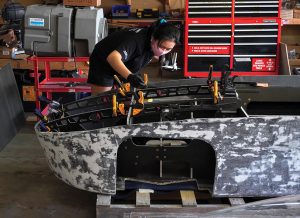
Figure 26: Lucy Zhang, Director of Engineering, works on the assembly of the carbon fiber chassis for Illini Solar Car’s second-generation vehicle.
When the lockdown lifted, we developed strict procedures, in compliance with University guidelines, to ensure the safety of our members. A few members at a time began returning to physical work for the first time in several months. As much of the design work had been completed virtually, we started to focus on some of the larger tasks of testing and assembly.
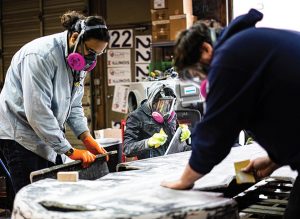
Figure 27: Mechanical group members, Tim Damisch, Mansoor Qureshi, and Julian Ruiz, work on preparing the bottom shell and service doors.
As we have moved into the fall semester, we continue to operate with safety as a priority. All of our regularly scheduled meetings continue to be held virtually. We have successfully recruited over 100 new members to join our team; they are all currently going through a virtual on-boarding process planned out by our group leads. Work at our garage has continued at a limited capacity. We have been working to finish our custom-designed battery pack and complete testing of our electric motor. Once chassis and suspension assembly are complete, these components will all come together to get our new car driving under its own power.
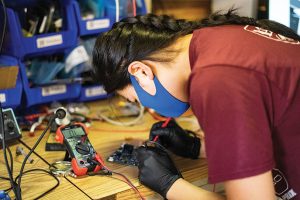
Figure 28: Lucy Zhang, Director of Engineering, tests a printed circuit board designed by the electrical group.
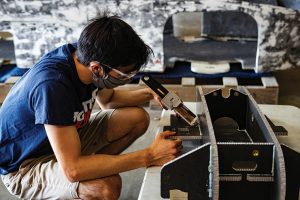
Figure 29: Business Lead, John Han, works on gluing together water-jetted carbon fiber panels for bottom shell chassis.
The pandemic still leaves much uncertainty for our team. However, we continue to work with a goal in mind: we aim to compete with our new car next summer at the American Solar Challenge.
This international race will take place over hundreds of miles of public roads across the United States. Success at the competition will be the culmination of many years of hard work from members of our team. We are very thankful for the continued support of the Grainger CEME for helping make this all possible.
